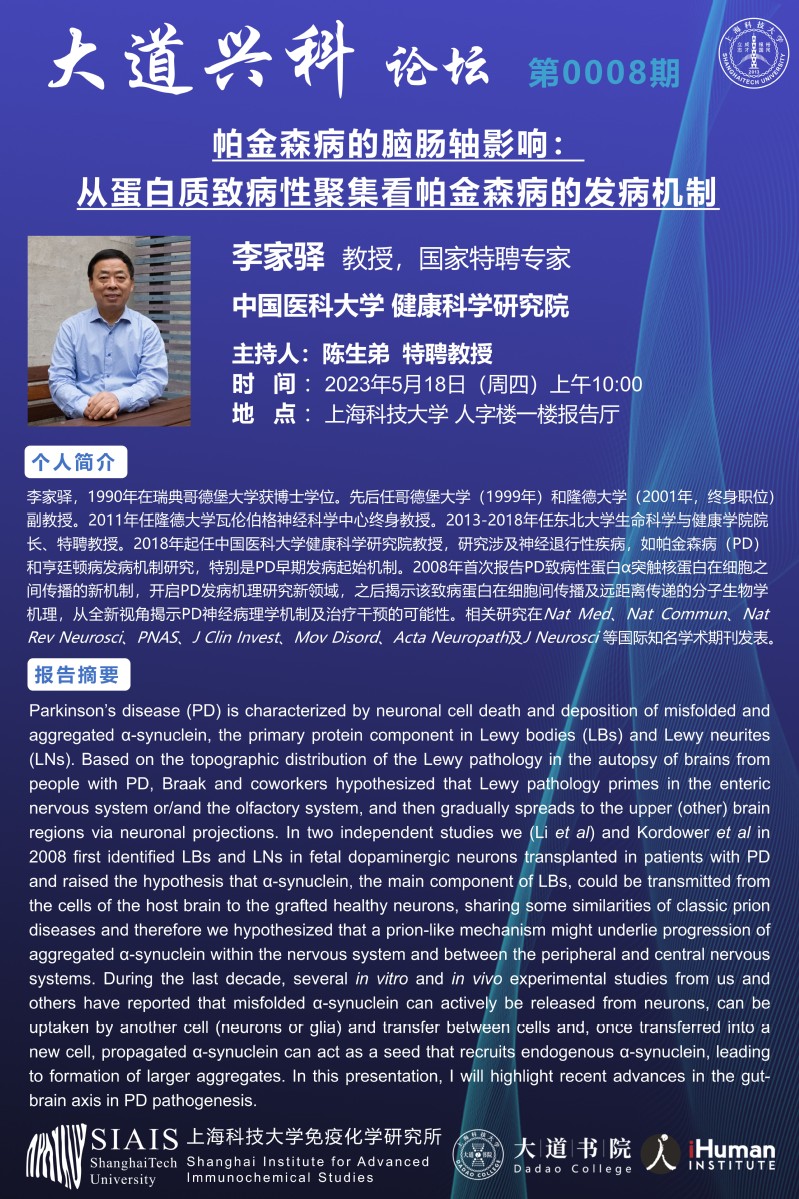报告题目:帕金森病的脑肠轴影响:从蛋白质致病性聚集看帕金森病的发病机制
嘉宾:李家驿 教授
主持人:陈生弟 特聘教授
时间:2023年5月18日周四 10:00
地点:上海科技大学人字楼一楼报告厅

Parkinson’s disease (PD)is characterized by neuronal cell death and deposition of misfolded and aggregated α-synuclein, the primary protein component in Lewy bodies (LBs) and Lewy neurites (LNs). Based on the topographic distribution of the Lewy pathology in the autopsy of brains from people with PD, Braak and coworkers hypothesized that Lewy pathology primes in the enteric nervous system or/and the olfactory system, and then gradually spreads to the upper (other) brain regions via neuronal projections. In two independent studies we (Li et al) and Kordoweret al in 2008 first identified LBs and LNs in fetal dopaminergic neurons transplanted in patients with PD and raised the hypothesis that α-synuclein, the main component of LBs, could be transmitted from the cells of the host brain to the grafted healthy neurons, sharing some similarities of classic prion diseases and therefore we hypothesized that a prion-like mechanism might underlie progression of aggregated α-synuclein within the nervous system and between the peripheral and central nervous systems. During the last decade, several in vitro and in vivo experimental studies from us and others have reported that misfolded α-synuclein can actively be released from neurons, can be uptaken by another cell (neurons or glia) and transfer between cells and, once transferred into a new cell, propagated α-synuclein can act as a seed that recruits endogenous α-synuclein, leading to formation of larger aggregates. In this presentation, I will highlight recent advances in the gut-brain axis in PD pathogenesis.



